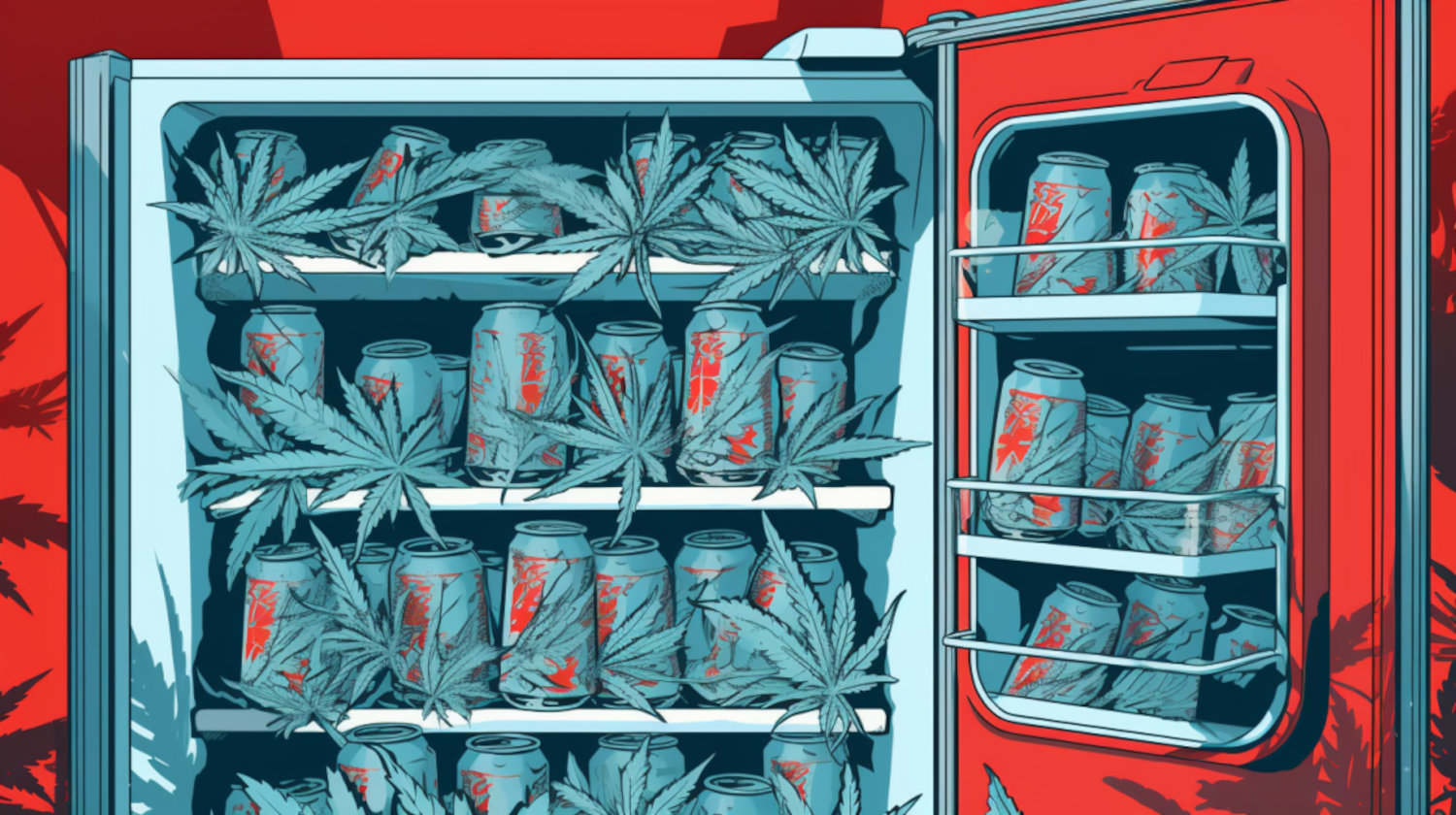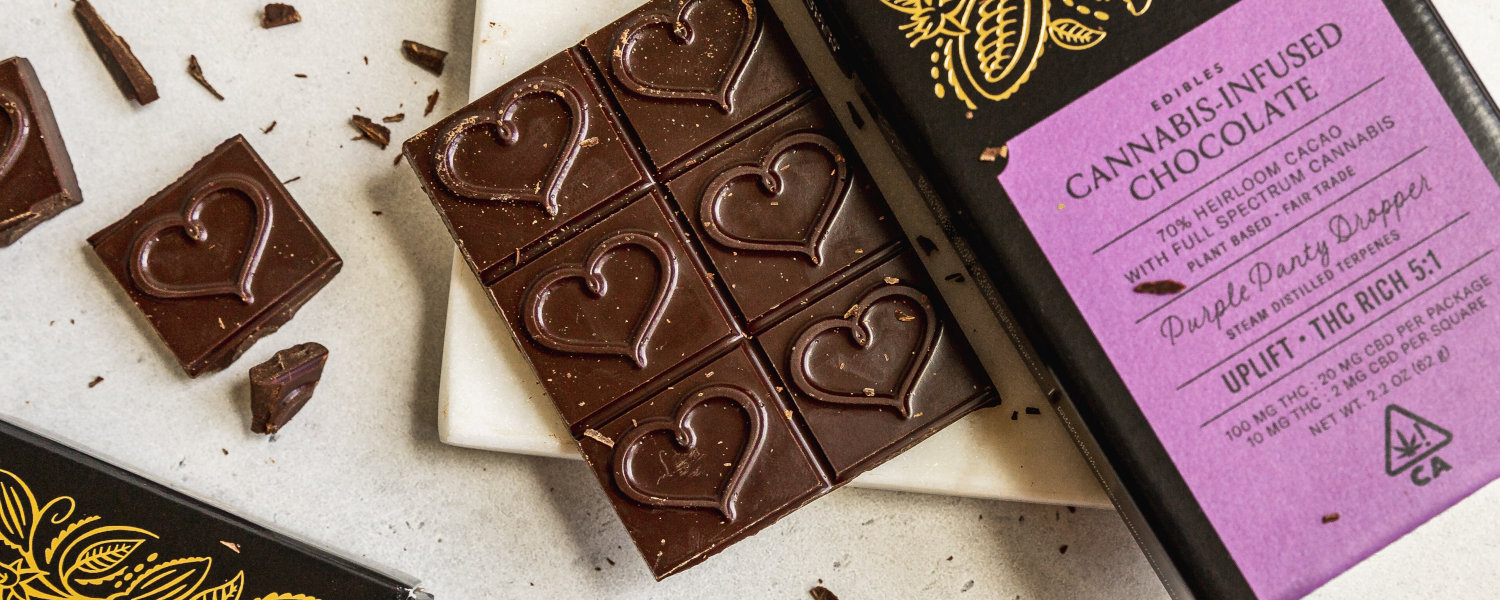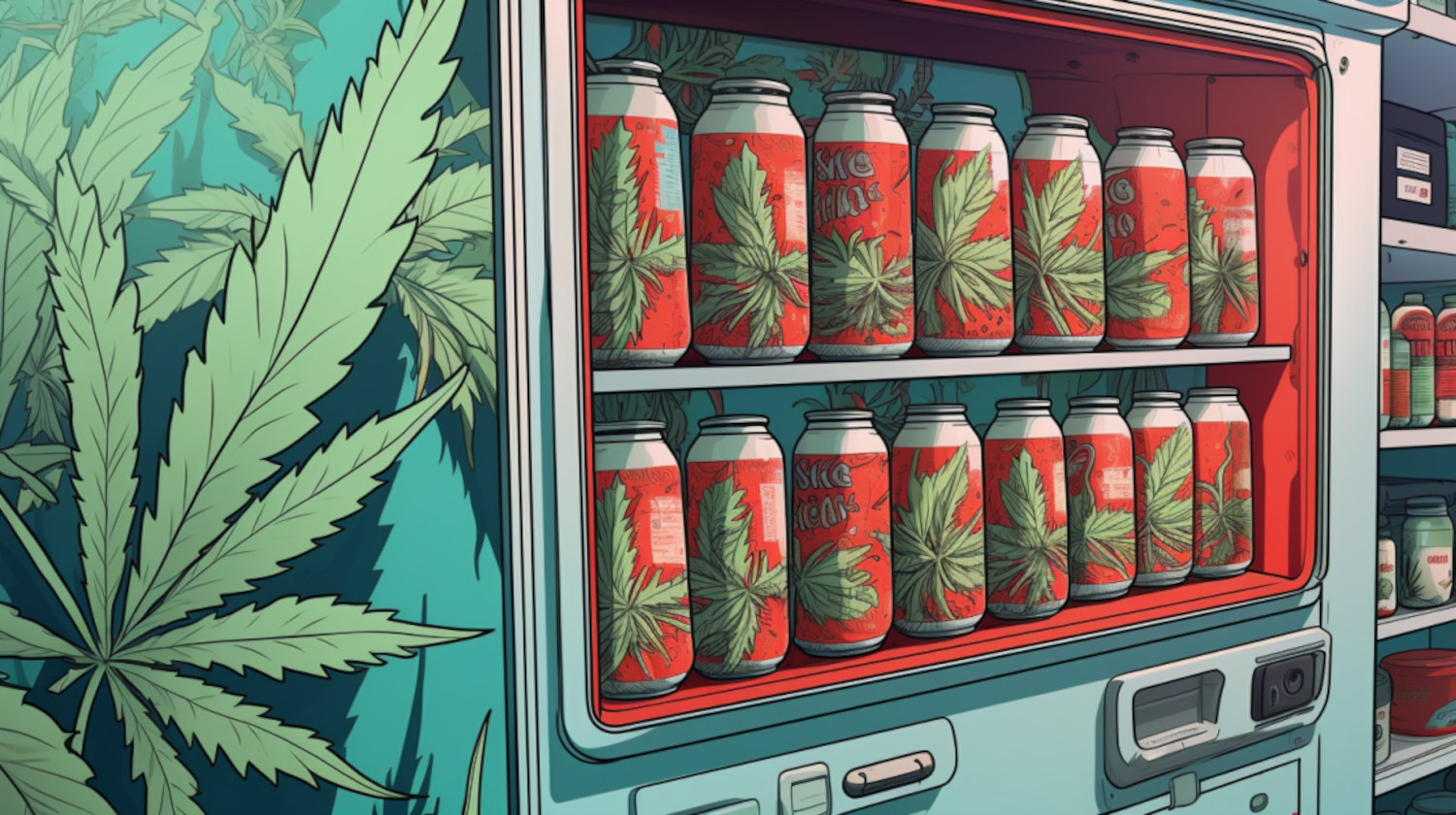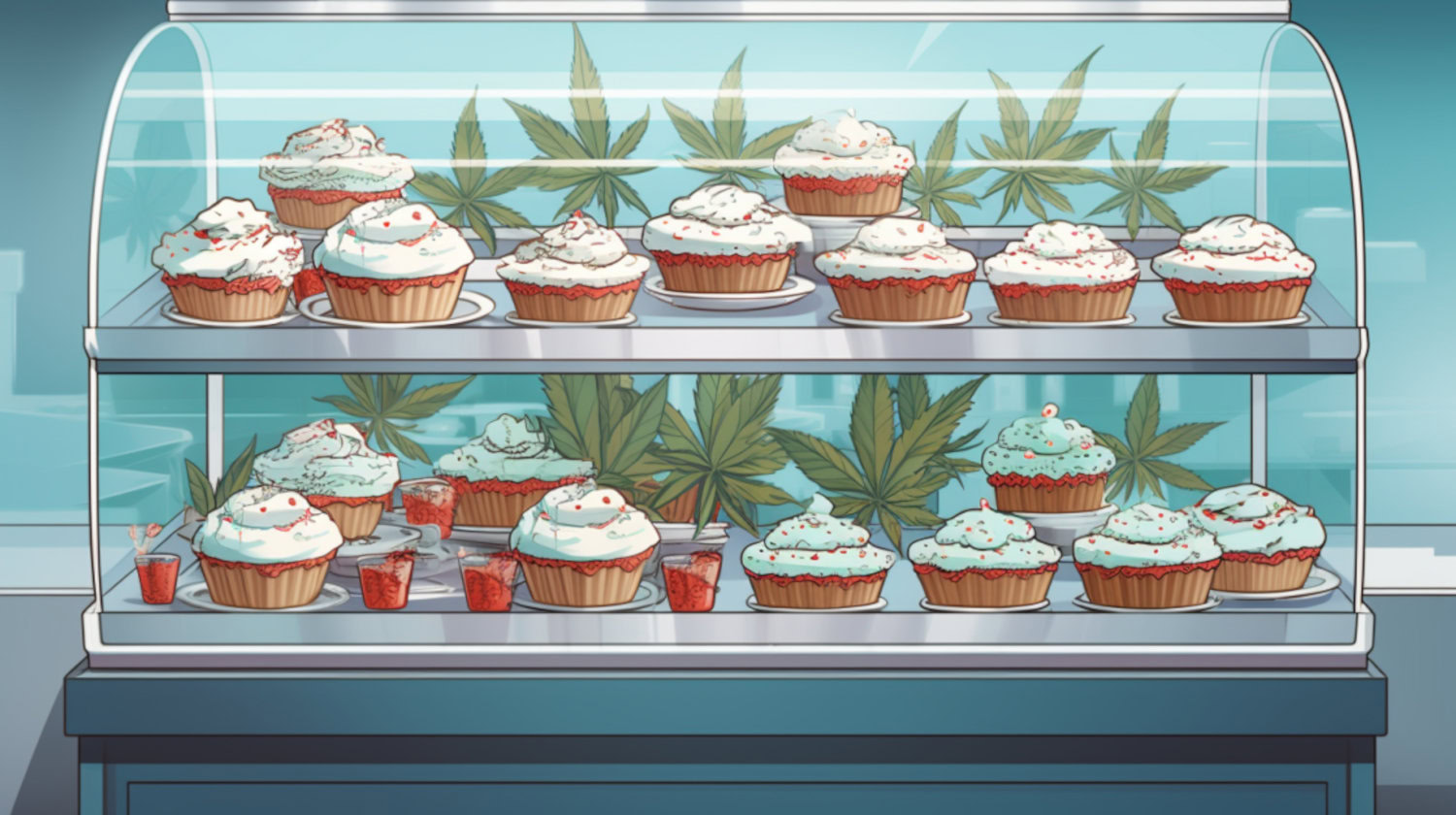More people are ingesting their cannabinoids by eating or drinking cannabis-infused products, such as THC water and baked edibles. Discreet, diverse, and indulgently satisfying, solid and liquid edibles are rapidly gaining momentum in both the adult-use and medical cannabis markets - and for good reason. But, when comparing THC drinks vs edibles, is there a clear winner?
Infused beverages accounted for 6% of edibles sales across the US in 2023, which is unsurprising considering that the effects typically last longer than other methods of consumption. The same applies to edibles, with the bulk of this market driven by candy. According to BDSA, candies are leading the market, with these sweet products accounting for 73% of sales in 2022.
The popularity of drinks and edibles comes amid a rise in scientific research into cannabinoid bioavailability — the absorption ability of a drug — with studies reporting that edible cannabis formulations may offer up to 6% bioavailability. Although this is much less than the 10% to 35% of cannabinoids that are bioavailable via smoking, the effects of ingested cannabinoids generally linger for much longer, allowing for more consistent symptomatic relief.
After consuming an edible or drink, the cannabis plant’s active ingredients are metabolized by the stomach before being released into the bloodstream and distributed throughout the body.1 THC drinks vs. edibles is a new debate, but each option has pros and cons.
Are THC Drinks Just Liquid Edibles?
Liquid THC drinks are based on the same concept as cannabis edibles. These products are infused with cannabinoids that the liver absorbs before they release their effects. The difference is that individuals may absorb small amounts of the cannabinoids contained in drinks through the gums, and these products are only in liquid form.
Although some cannabinoids in THC drinks may be absorbed through the oral mucosa – the “skin” lining the inside of the mouth, cheeks, and lips – most of the THC passes through the liver like a typical cannabis edible. The only exceptions are lollipops and lozenges since they are not chewable; therefore, these products are absorbed orally.
THC drinks are often made using nanoemulsion technology, like some cannabis edibles. These nanosized droplets can more effectively solubilize various hydrophobic and hydrophilic substances, allowing for a better mode of cannabinoid delivery with high bioavailability. Oral cannabis products that are manufactured using this process come in many forms and are popular with legal retail cannabis dispensaries.
Raw cannabis flower can be made into a fusion of products, including concentrates, edibles, tinctures, and oils. Some other examples of non-traditional products in the market are rectal and vaginal suppositories, lozenges, sublingual sprays, tongue strips, and inhalers. Edible users hope for fewer health risks than smoking cannabis while also enjoying improved sleep and discreet consumption.2
Edibles can include chocolates, candies, gummies, baked goods, beverages, and lozenges that are infused with cannabis. Some consumers prefer to make their own at home, while others opt for ready-to-eat dispensary goods. Beverages are also infused with cannabis but are simply swallowed instead of chewed.
The pharmacokinetics of cannabis influence the onset and duration of effects. This is the duration and process by which the plant's active compounds, like delta 9 THC, are metabolized and absorbed into the bloodstream. Delta 9-THC is metabolized in the liver, where it is turned into 11-OH-THC, a compound with more potency than delta 9-THC. From there, 11-OH-THC is absorbed into the bloodstream, where it is distributed to the brain and other organs to act on the endocannabinoid system.
The most widely reported downside is the unpredictability of edible onset. This can lead to under- or over-consumption. Delayed onset marks the most notable difference between ingestable and inhalable cannabis products.3
Edibles vs THC Water: Effects Compared

Cannabis consumers who want to experience the effects quickly may prefer inhalable products, which get to work almost instantly. The THC contained in edibles and drinks must first bypass the liver, so the effects may take up to 30 minutes to two hours. This depends on your physical state, whether or not you have a full stomach, personal metabolism, biochemistry, dosage, etc.4 If you don't want to wait a long time for cannabis’ effects to surface, opt for THC water made using nanoemulsions, which can help increase the absorption rate of the cannabinoids. These products also allow for maximum bioavailability so that you can make your supply last longer.
Due to their lipophilic nature, THC and CBD are highly dissolvable in fats but have low oral bioavailability, being as low as 6%. Oral THC formulations, such as edibles, are absorbed first by the liver via a first‐pass metabolism process, resulting in reduced peak blood THC concentration relative to inhalation and a longer duration to reach peak concentration.1 Drinks may be likely to kick in faster since they may be metabolized more quickly.
After consuming cannabis edibles, you may feel the effects for five to eight hours. Intensity varies on the potency, each individual's unique biochemistry, and a number of other factors, such as whether or not the consumer has an empty stomach before drinking their THC, their tolerance, weight, gender, age, product quality, and more.
Liquid Edibles and Traditional Options: Possible Risks
Consuming a cannabis beverage or cannabis edible may ensure long-lasting effects but with a potentially delayed onset in comparison to inhalable cannabis. Nonetheless, solid and liquid edibles are smoke-free and don't cause a hangover. Beverages usually carry fewer health risks than smoking and vaping. Cannabis beverages are generally kinder to the waistline since they are lighter in calorific content, but there is a chance that some may contain sugar. However, overconsumption may spur an emergency room visit, psychotic symptoms, or allergic reactions, so drink responsibly.
To prevent consuming too much sugar or other ingredients that you may have an aversion to, read the label contents of a liquid THC drink. Overconsumption of THC is common among low-tolerance consumers who aren’t fully aware of the dosing. Checking the dosing and serving size and purchasing from suppliers who present buyers with third-party lab testing results may help avoid unpleasant side effects, such as anxiety, confusion, dizziness, increased heart rate, memory loss, nausea, and vomiting.
The quality and safety of edible drinks vary between manufacturers, so shop wisely from trustworthy brands. Likewise, some methods of consumption (like canna bumps) and minor cannabinoids (like HXC) haven't been sufficiently studied and could present risks that aren't present with traditional THC or CBD edibles and methods of consumption.
By taking it slow, sticking to traditional methods of consumption, and avoiding consuming alcohol with THC drinks, as well as certain medications, including sedatives like Benadryl and antidepressants like Prozac, you can consume with confidence. Beginning with a small dosage and gradually working your way up is recommended. Although no fatal overdoses have been reported, THC's effects may be unpredictable and intense if you consume more than the recommended serving amount within a one to two-hour period.
Which is More Available: THC Drinks vs Edibles?

The cannabis-infused edible products market is projected to inflate to $20.60 billion by 2028 from $9.68 billion recorded in 2023. As a relatively new market, drinks account for a minor fraction of the edible retail market.
Since consumers have been experimenting with cannabis cooking for eons, it comes as no surprise that solid edible products are more widely available. Until scientists began implementing nanoemulsion practices into their liquid THC drink recipes, they were having a hard time trying to dissolve THC and other cannabinoids into beverages. Nowadays, THC water is available in a variety of flavors.
Cannabinoids are not very water-soluble molecules, meaning that THC and CBD do not bind well with liquids, making them harder to absorb and less effective than if they were infused with a fatty medium like butter or made with nanoemulsion. Nanoemulsion involves the use of combining cannabinoid extracts with emulsifying agents, allowing the body's endocannabinoid system to absorb THC more easily. Amid the rise of nanoemulsion practices, liquid THC drinks are becoming more widely available in the legal market. Still, the range of solid edibles is currently more diverse than the range of drinkable cannabinoid products.
Choosing Between Liquid THC Drinks and Edibles
No two people are the same, and neither are branded THC drinks. Each brand will implement its own unique production and testing procedures, meaning that there may be a noticeable difference in effects and quality from one liquid THC beverage to the next. Refrain from combining products, particularly if you are a new cannabis consumer. If you have a high tolerance, such as 20mg THC, you may benefit from consuming two separate drinks that contain 10 mg each. However, anything higher than your tolerance may cause unpleasant side effects, so sip slowly.
Combining edibles and drinks is not a good idea, especially if you don't have a high tolerance. Although edibles can be consumed on the move, high-THC products of this kind are better suited for nighttime use or relaxing afternoons at home. Since edibles and THC drinks typically release their effects after a longer time period than other products, both are suitable for consumers who require satisfactory, long-term symptomatic relief. On the other hand, both products have a longer onset time than inhalable cannabis and oral capsules, so it is important to wait for up to two hours to assess the effects properly.
If you are adventurous with flavors and want to try as many different tastes as possible, edibles may be more to your liking since the market is more well-established. Nonetheless, liquid edibles are catching up, with producers becoming more flavorfully experimental. Remember that more brands are currently dabbling in the edibles field than they are with THC drinks. Once the market reaches full maturity, consumers will have more choices regarding branded product ranges.
References
- Lucas CJ, Galettis P, Schneider J. The pharmacokinetics and the pharmacodynamics of cannabinoids. Br J Clin Pharmacol. 2018 Nov;84(11):2477-2482. doi: 10.1111/bcp.13710. Epub 2018 Aug 7. PMID: 30001569; PMCID: PMC6177698. ↩︎
- Spindle TR, Bonn-Miller MO, Vandrey R. Changing landscape of cannabis: novel products, formulations, and methods of administration. Curr Opin Psychol. 2019;30:98-102. doi:10.1016/j.copsyc.2019.04.002 ↩︎
- Barrus DG, Capogrossi KL, Cates SC, et al. Tasty THC: Promises and Challenges of Cannabis Edibles. Methods Rep RTI Press. 2016;2016:10.3768/rtipress.2016.op.0035.1611. doi:10.3768/rtipress.2016.op.0035.1611 ↩︎
- MacCallum CA, Russo EB. Practical considerations in medical cannabis administration and dosing. European Journal of Internal Medicine. 2018;49(49):12-19. doi:https://doi.org/10.1016/j.ejim.2018.01.004 ↩︎
The information in this article and any included images or charts are for educational purposes only. This information is neither a substitute for, nor does it replace, professional legal advice or medical advice, diagnosis, or treatment. If you have any concerns or questions about laws, regulations, or your health, you should always consult with an attorney, physician or other licensed professional.




